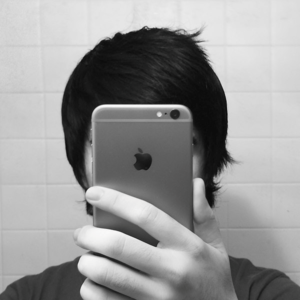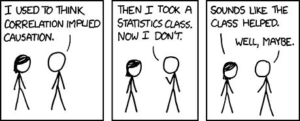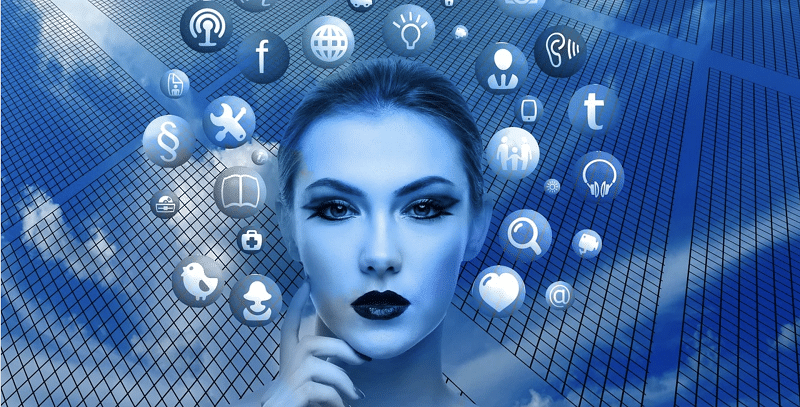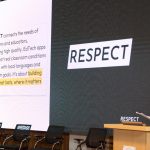March 23, 2022
This is the synthesis of brick #628, Social Media and Adolescent Mental Health. To play the full interactive experience, achieve a final score and add the brick to your personalised library, click the image below:
How does social media really affect adolescent mental health, and are we in danger of overlooking its benefits?

Moral panic about the impact of social media in the early decades of the 21st century has been compared to alarm at automobile fatalities in the first decades of the 20th century. But it has been argued that the most vulnerable and susceptible users of social media are teenagers. Tessa Peres examines recent empirical research into social media and adolescent mental health, while also providing a wider historical perspective on the anxieties provoked by new media.
A Complex Overall Picture
Research shows that rates of depression, anxiety and suicide in adolescents have risen notably in recent years: a study of Americans aged 10–24 found that rates of suicide in this group increased 56% between 2007 and 2017.[1] The widespread uptake of social media during the same period has generated concerns that platforms such as Facebook, Instagram and Snapchat may be behind this worrying trend. But researchers have uncovered a complex picture: social media use and mental health are mediated by a number of different factors.
A 2016 review of thirty papers examining the relationship between time spent on social media and depression and anxiety showed mixed results. Eight found a direct positive correlation, while seventeen found no significant correlation.[2] Reviewing this research, the authors emphasised that a more nuanced approach was required: only by considering factors that might mediate the relationship between social media and the mental health could a relationship between the two be determined. For example, research shows that more integrated social networks and increased feelings of social connectedness are associated with lower levels of depression, while increased social anxiety is linked to passive uses of social media (viewing others’ content, rather than creating one’s own) and increased rumination (brooding over negative thoughts). Instead of fixating on the technology itself, the authors of the review urge us to examine the function of social media for the individual social media user. Studying a range of variables can help determine whether social media is likely to enhance, or undermine, an individual adolescent’s wellbeing.
Living for Likes?
One frequently expressed concern about social media is its encouragement of obsessive social comparison.

When Facebook introduced the “like” button in 2009, user engagement exploded: as the company discovered, a quantifiable metric of positive responses proved far more compelling than a list of friendly comments. Given the rapid development of the adolescent brain’s socioaffective circuitry, teenagers may be particularly sensitive to this aspect of social media.[3] A constant stream of social information — often amounting to carefully curated “highlight reels” designed to project unrealistic impressions of users’ lives — may prove destabilising for teenagers already struggling with self-esteem issues.
A particularly interesting case for considering the potential benefits and dangers of such online feedback is that of adolescents with social anxiety. While socially anxious people may find social media a more accessible social environment (due to its limited range of social cues, as compared with face-to-face interactions), some evidence suggests that social anxiety may also drive addiction to social media. If socially anxious teenagers lack a sense of social belonging, they may compulsively seek social approval in the form of positive comments and “likes”. While such addictive behaviours are extreme, we can see how instantaneous, quantifiable feedback could prove dangerously compelling to anybody.
When the behaviourist psychologist B. F. Skinner tested the responses of mice to regular and variable rewards in the 1950s, he made an important discovery: that the mice performed reward-seeking behaviours for longer, and more persistently, if the reward arrived in an unpredictable manner. Translate this to social media: it is precisely the user’s uncertainty about how “likes” a photo or status will receive that incentivises more reward-seeking behaviour (in this case, posting content online). Given that social media companies rely on maximising user engagement in order to make profit, it is unsurprising that those designing the platforms are well-versed in the principles of behaviourist psychology.
Correlation and Causation
A central problem for researchers investigating the psychological effects of social media is the slippery relationship between causation and correlation.

“Correlation” refers to a statistical relationship between two variables, but it does not necessarily indicate causation. Thus, while there is clear evidence that levels of adolescent depression and suicide have grown alongside increasing use of social media, other possible causal factors should also be considered. The 2008 financial crisis and subsequent economic insecurity coincided with the widespread availability of smartphones and uptake of social media. It is therefore quite possible that this or other causes of increased mental suffering is the wider social and economic situation.
We should also be aware of the difficulty of determining the direction of causation. Research shows that lower levels of depression correlate strongly with perceived social support from one’s social media network.[4] However, studies have also showed that depressed users of social media tend to underestimate the social support they receive online (what is known as “perceptual bias”).[5] People with higher levels of depression may be inclined to interpret their experiences online in a negative light, which may in turn sustain their depressed mental state. While it is always difficult to determine the direction of causality, then, many researchers argue that the relationship between problematic social media use and mental health difficulties is most likely bi-directional. In other words, adolescents with mental health problems may be more inclined to experience social media interactions in negative ways, and these negative experiences may then sustain or exacerbate underlying mental health issues.
RECOMMENDED: https://global-edtech.com/category/edtech-market/
Moral Panic and the Precedent of the Motor Car
When considering the psychological effects of social media, it is important to place this new technology in a wider historical context. While the near-ubiquitous use of social media amongst teenagers in developed countries undoubtedly represents a major transformation to our social world, it is also worth remembering that other new technologies have generated similar levels of anxiety in the past — though, often for good reason.
In the first decade of the 20th century deaths caused by automobiles were twenty-five times higher (per mile travelled) than they are today. This created huge public debate about the safety and permissibility of widespread car use.

As the media studies professor Kirsten Drotner writes,
every time a new mass medium has entered the social scene, it has spurred public debates on social and cultural norms … In some cases, debate of a new medium brings about — indeed changes into — heated, emotional reactions … what may be defined as a media panic.[6]
A moral panic is an outbreak of moral outrage that is disproportionate to the actual threat. The technology scholar Milton Mueller reminds us that moral panics are dangerous because they tend to oversimplify complex issues: by providing an easily identified “bogeyman”, they deflect attention away from more complicated (and often more intractable) social problems. This perspective might lead us to wonder whether fears about social media offer a convenient distraction from far more significant challenges to adolescents’ wellbeing, such as reduced economic prospects and the threat of climate change.
However, this does not mean social media does not pose real dangers. A hundred years ago rapidly growing car use presented very real challenges to which society had to adapt. There were few warning signs or posted speed limits, no traffic lights or traffic policemen, no obligatory driving tests (before 1930 in the UK), and no road markings. Drinking-driving was not considered a serious crime. Even if moral panic can lead to extreme or irrational demands, it does not mean that concern is unfounded or does not require the introduction of effective measures and sanctions.
Wider Questions Around Technology Use
Social media is merely one of the many capabilities presented by computer technology. Even if its attractions have been enhanced by the facility of touchscreens and the application of data analytics and artificial intelligence, the wider tech context is impossible to separate from the social media experience. Both the hardware (e.g. the impact of blue light from screens) and the wider software context (e.g. gaming, word-processing, photo-sharing) are impactful — and possibly more so. Likewise, the internet has made pornography much more accessible to everyone of all ages and its impact on mental health is not well understood or easy to fathom.
Moreover, technology and social media are not specifically a “teenage” problem: there are legitimate grounds for presuming that parental engagement with children has been adversely impacted by technologies including online: adults in the US spend 10.5 hours a day looking at screens.
Gender

But one reason for suspecting that social media can be damaging to teenagers is because its use is more widespread by girls and mental health among girls seems to have declined more markedly than mental health among teenage boys.
Even so, there are strong counter-arguments to assert that social media has been a tool to connect and empower women. The #metoo movement was a social media innovation. The American social activist Tarana Burke began using the tag on the Myspace network in 2006. In 2016 the Ukrainian journalist Anastasia Melnichenko launched #Iamnotafraidtospeak, and in 2017 the actress Alyssa Milano repurposed the #MeToo tag on Twitter to publicise her treatment by the film producer Harvey Weinstein.
Conclusion: The Jury’s Out
The relationship between social media and adolescent mental health is complicated. While certain negative experiences online, such as cyberbullying, are undoubtedly linked to higher rates of depression and self-harm, there is a risk of fixating on the dangers of social media and underplaying its positive aspects. For example, evidence shows that social media can provide invaluable social support to adolescents who may be experiencing discrimination elsewhere in their lives, such as LGBT+ teens. While the profit motive may have shaped social media platforms in potentially damaging ways, much rests on the way in which individuals navigate the online world. As with all technologies, the most important question is not what it is, but rather how and why it is being used.
References
[1] Sally C. Curtin and Melonie Heron, ‘Death Rates due to Suicide and Homicide Among Persons Aged 10–24: United States, 2000–2017’, NCHS Data Brief, no. 325. Hyattsville, MD: National Center for Health Statistics; 2019.
[2] Elizabeth M. Seabrook, Margaret L. Kern, and Nikki S. Rickard, ‘Social Networking Sites, Depression, and Anxiety: A Systematic Review’, vol. 3, no. 4, (2016).
[3] Jacqueline Nesi, ‘The Impact of Social Media on Youth Mental Health: Challenges and Opportunities’, North Carolina Medical Journal, March 2020, 81 (2), 116–121.
[4] Wright KB, Rosenberg J, Egbert N, Ploeger NA, Bernard DR, King S. ‘Communication competence, social support, and depression among college students: a model of Facebook and face-to-face support network influence’, Journal of Health Communication 2013;18(1): 41–57.
[5] Park J, Lee DS, Shablack H, Verduyn P, Deldin P, Ybarra O, et al. ‘When perceptions defy reality: the relationships between depression and actual and perceived Facebook social support’, Journal of Affective Disorders, 2016 August; 200:37–44.
[6] Kirsten Drotner, “Dangerous Media? Panic Discourses and Dilemmas of Modernity,” Paedagogica Historica 35, no. 3 (1999): 593–619.
By Dr. Tessa Peres
Please contact hello@brillder.com or visit https://brillder.com/ to find out more about Brillder.









